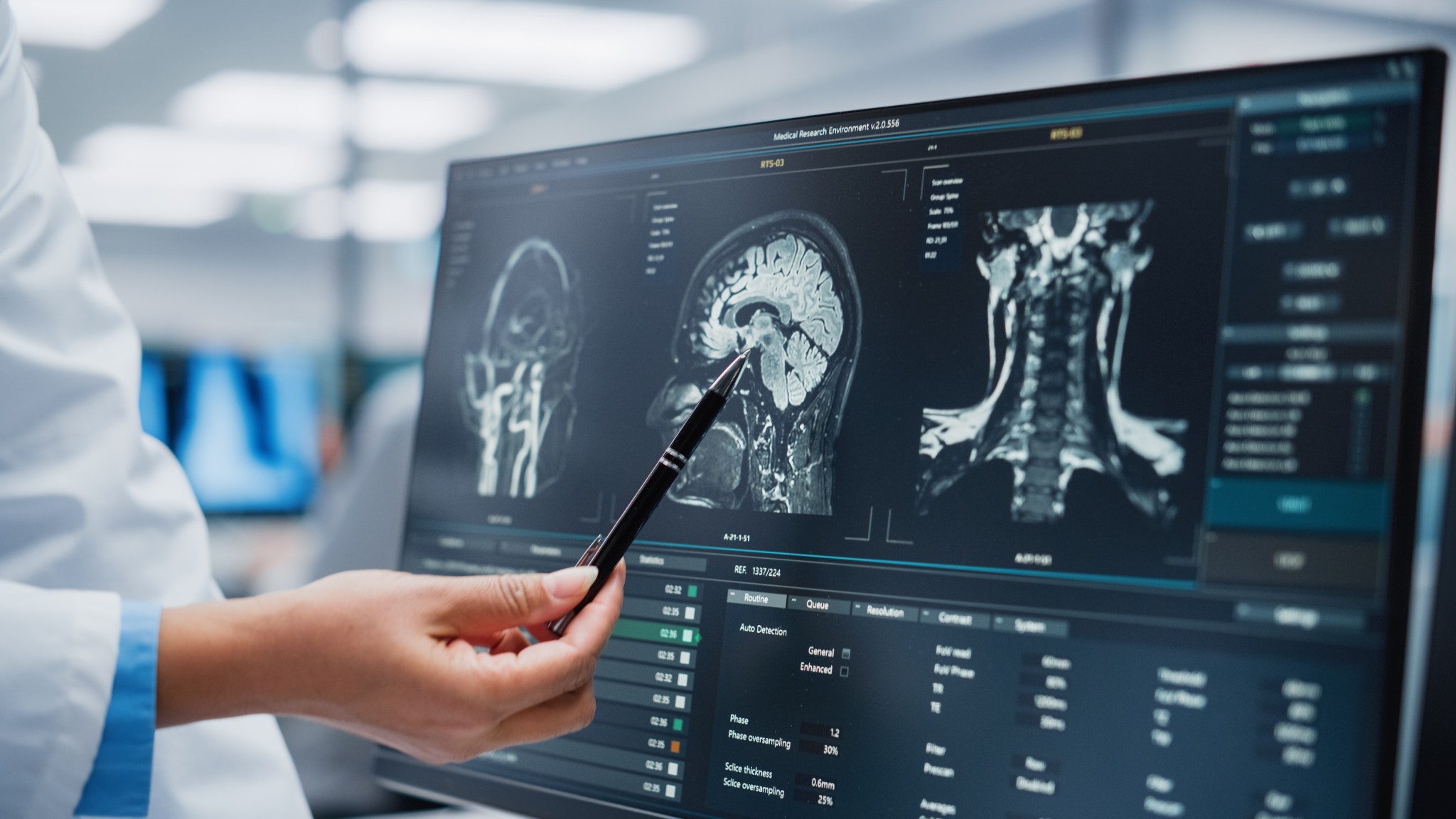How Neurosurgery Can Improve Your Quality of Life: Conditions, Benefits, and Breakthroughs

TABLE OF CONTENTS
Do you struggle with memory, focus, or controlling tremors that hinder your daily life? Have you ever experienced that "foggy brain" feeling? It is a feeling where simple tasks leave you exhausted and frustration lingers. While forgetfulness and slowed thinking are often attributed to the natural ageing process, what if there were solutions beyond crossword puzzles and brain teasers? While the brain is incredibly complex, sometimes a helping hand can unlock its full potential. In this article, we’ll talk about Neurosurgery and its impact on quality of life.
What Is Quality of Life?
Before diving into the specific ways neurosurgery can be beneficial, it's important to understand what we mean by "quality of life." This term includes various aspects, including:
Physical health: The ability to perform daily activities without pain or limitations.
Mental health: Emotional and psychological well-being.
Social well-being: Relationships and connections with others.
Functional independence: The ability to manage personal needs and participate in desired activities.
How Can Neurosurgery Enhance Your Quality of Life?
According to the American Association of Neurological Surgeons, over 13.8 million neurosurgical procedures are performed each year! Neurosurgery procedures address a wide range of issues affecting the brain, spine, and nervous system. Here are some examples of how these neurosurgery procedures can enhance your quality of life:
1. Pain Management
Chronic pain, especially from neurological conditions like back pain, trigeminal neuralgia, and spinal stenosis, can significantly impede daily life. Neurosurgery offers various minimally invasive and surgical options to alleviate pain, including:
Spinal cord stimulation: Implants deliver electrical impulses to the spinal cord, interrupting pain signals to the brain.
Dorsal column stimulator: This implant targets the spinal cord's dorsal column, blocking pain signals before they reach the brain.
Nerve blocks: Injections of local anaesthetics and steroids can provide temporary or long-term pain relief.
Microdiscectomy: Removal of herniated discs impinging on nerves, causing pain and weakness.
Tumour removal: Resection of tumours pressing on nerves or causing pain in the brain or spine.
2. Treatment of Movement Disorders
Parkinson's disease, essential tremor, and dystonia are neurological conditions causing uncontrollable movements, tremors, and rigidity. Neurosurgery can offer solutions like:
Deep brain stimulation (DBS): Electrodes implanted in the brain modulate abnormal brain activity, improving movement control.
Pallidotomy or thalamotomy: These procedures create lesions in specific brain regions to interrupt abnormal pathways, reducing tremors and rigidity.
3. Epilepsy Treatment
Epilepsy is a neurological disorder characterised by recurrent seizures. When medication fails to control seizures, neurosurgery may be an option. This includes:
Epilepsy surgery: Removing the part of the brain causing seizures, offering long-term remission for localised epilepsy.
Corpus callosotomy: This procedure severs the corpus callosum, the main communication bridge between brain hemispheres, reducing the spread of seizures in severe cases.
4. Brain Tumour Management
Brain tumours can cause various neurological symptoms and potentially be life-threatening. Neurosurgery plays a vital role in their treatment, including:
Craniotomy: Surgical removal of all or part of a brain tumour, aiming for complete or maximal resection.
Biopsy: Sampling tissue for diagnosis and determining the best treatment course.
5. Addressing Hydrocephalus
Hydrocephalus is a condition where excess cerebrospinal fluid (CSF) accumulates in the brain, causing pressure and potentially damaging brain tissue. Neurosurgery offers options like:
Ventriculoperitoneal shunt surgery: Implanting a shunt to divert excess CSF from the ventricles of the brain to the abdomen, where it can be absorbed.
Endoscopic third ventriculostomy: Creating a new pathway for CSF drainage within the brain using minimally invasive techniques.
6. Spinal Cord Injury Treatment
Spinal cord injuries can cause paralysis, loss of sensation, and other complications. While not a cure, neurosurgery can sometimes improve function and prevent further damage by:
Decompressing the spinal cord: Removing bone fragments or blood clots compressing the cord can minimise long-term damage.
Stabilising the spine: Surgery may be needed to stabilise fractures or dislocations of the spinal vertebrae.
7. Treating Neurovascular Conditions
These conditions involve blood vessel abnormalities in the brain or spine. Neurosurgery can address them with:
Aneurysm clipping: Placing a small clip at the base of an aneurysm to prevent bleeding.
Arteriovenous malformation (AVM) embolization: Blocking abnormal blood connections to prevent bleeding or seizures.
Carotid endarterectomy: Removing plaque buildup in the carotid artery to prevent stroke.

Neurosurgical Conditions Treated by Neurosurgery
The spectrum of Neurosurgical Conditions addressed by neurosurgery is vast, encompassing both chronic and acute situations. Here are some examples:
Brain tumours: Neurosurgical interventions like tumour resection, biopsy, and placement of drug-delivery devices can offer improved survival rates and symptom management for patients with brain tumours.
Epilepsy: Surgery can be a viable option for individuals with severe epilepsy that doesn't respond well to medication. Procedures like lobectomy or corpus callosotomy can significantly reduce seizure frequency and improve overall well-being.
Movement disorders: Tremor, rigidity, and other symptoms associated with Parkinson's disease and other movement disorders can be alleviated through Deep Brain Stimulation (DBS) surgery, where electrodes are implanted in specific areas of the brain to regulate abnormal electrical activity.
Chronic pain: Spinal cord stimulators and other neurosurgical interventions can offer pain relief for individuals suffering from chronic pain conditions like neuropathic pain, complex regional pain syndrome, and failed back surgery syndrome.
Head trauma: Neurosurgical interventions play a crucial role in treating head injuries, from managing bleeding and reducing pressure within the skull to repairing skull fractures and removing blood clots.
Spinal cord injuries: While complete recovery from spinal cord injuries may not always be possible, neurosurgery can help stabilise the spine, minimise further damage, and manage associated pain and symptoms, potentially improving function and quality of life.
Final Words
Neurosurgery can be a life-changing treatment option for patients with neurological conditions. From improving brain function and restoring motor skills to enhancing emotional well-being, the benefits of neurosurgery are vast. As technology continues to advance, so too will the field of neurosurgery, offering hope to patients around the world seeking to enhance their brainpower and quality of life.
If you experience any neurological problems, then we suggest you consult an expert neurologist at your nearest tertiary-care hospital today! Take action and secure your future!


